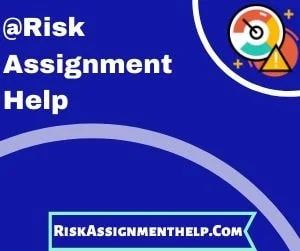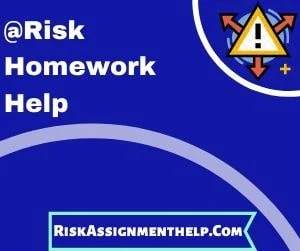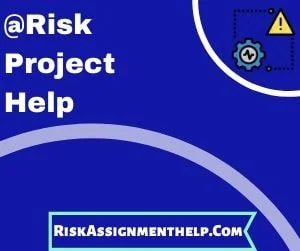Disaster Preparedness Assignment Help Checklist
- Disaster Preparedness Assignment Help
- Disaster Preparedness Homework Help
- Disaster Preparedness Project Help
Disaster Preparedness Assignment Help

If you require Disaster Preparedness project help, there are several techniques that are available. One is to utilize the "same task" method. Another is to establish a brand-new role with a various set of risks.
If you have a plan for your Disaster Preparedness Evaluation Project (RA), you should consider the approach. The task methodology works if the task assigned is a small one. A task with a small chance of failure (or success) can enable the very best results in handling dangers.
Many types of jobs are specified in terms of risk and are used for estimating and controlling dangers. It is a lot easier to assess and control a small job than a big one. If you have a huge job that you need to manage every day, you are looking at big threat.
Big jobs that involve considerable dangers, have a high effect on others. There are few methods to do a large task by yourself, or one that is hard to do. When a big task is involved, it ends up being a team effort.
In many cases, risks can be as little as a single day-to-day step. The threats and chances in the daily life of the worker are considerable. Team management approaches can be helpful for handling such risks.
The best method to set up a Disaster Preparedness evaluation project is to assign one significant job to each individual. In most cases, it is best to assign some threat to each individual so that they comprehend the threats included with that task. The danger will be recognized in the appointed job and will be consisted of in the yearly danger report.
Sometimes it is necessary to define a new role for individuals with different roles. Each function might have a brand-new task to carry out, and so the Disaster Preparedness assessment assignment might end up being confusing. A brand-new role will permit each employee to finish their task and define the dangers associated with that job.
Managing the risks associated with a Disaster Preparedness evaluation task is a complex procedure. The threats will frequently involve staff. You need to look at how the threats will affect each staff member separately, and how they will impact the company.
A fundamental part of this procedure is to choose who has the duty for the task. Is it the staff member, or the supervisor? It is not unusual for a person to delegate a job that requires threat assessment, however that is not how to manage dangers successfully. The Disaster Preparedness assessment project should be appointed by an authority.
When assigning a Disaster Preparedness assessment assignment, consider a circumstance where you need to entrust, but do not desire the danger to go unnoticed. You want to be sure that the threat is appointed appropriately. If the Disaster Preparedness evaluation project is designated to somebody who does not have the understanding to deal with the project, there is a risk of a risk assessment becoming another chance for mistake, causing additional risk.
The simplest method to identify who has the duty for a Disaster Preparedness assessment task is to utilize group management. If you have more than one team handling the assignment, think about organizing jobs based on the skill level of the staff members in each group. Each team can consider its own approach to risk evaluation. Designating the very same job by each team can puzzle the jobs, but it is a method to ensure that the danger is assigned properly.
The Disaster Preparedness evaluation task is an intricate job that can make or break your company. With a little help from management training, you can prevent the typical mistakes and guarantee that your @risk task results in successful results.
Disaster Preparedness Homework Help

Disaster Preparedness research help can be a real video game changer when it concerns getting the most out of the professional service that an organization provides for its employees. This is also real of the majority of Disaster Preparedness assessment projects, which can make a big distinction when it comes to reducing general threat.
It holds true that every risk project can have an effect on the business's bottom line. Every private designated to a specific danger activity has a direct effect on the total structure of the company. If the entire personnel is able to understand the dangers included and take steps to decrease the threats connected with that particular task, there will be a much bigger effect than if every person were to feel disinterested in the task.
For a Disaster Preparedness assessment project, this can make a huge distinction. A person's attention and interest are very likely to move towards the designated job. If there are a lot of questions or issues associated with the project, then there might be a lower likelihood that the entire team will find a solution to the issues connected with the task.
However the work of a Disaster Preparedness task is to develop chances for development and that implies that the project needs to be attended to. The very best way to do this is by assigning time to fix issues associated with the project.
A top quality support system is very important when it comes to supporting the growth of a company through the development of Disaster Preparedness assessment tasks. You need to search for business that have a number of individuals designated to this type of assignment so that all of them are as close as possible to the task. This makes sure that the project is managed properly and that all of the individual requirements are fulfilled for the project.
When you're designated to Disaster Preparedness project, it can be tempting to skip a couple of tasks just because they are no longer urgent, or you wish to move onto another project. However when this takes place, it's necessary that you take steps to correspond with individuals designated to the project.
You'll likely be making a lot of development on the risk evaluation task if you're working carefully with your assignment manager. The assignment supervisor can be a valuable source of feedback on the development you're making on the project and any problems that are required to be solved.
When it concerns handling your threat assessment project well, it's important that you work as a team. And when it pertains to working as a team, the very best way to attain this is by handing over tasks.
Some tasks might be difficult to hand over such as finding an option to an issue related to the danger evaluation assignment. If there are a variety of individuals designated to the assignment, then it is very important that they can work as a team to fix the problem.
If the assignment is not urgent or you do not need more time to deal with the assignment, then you can pick to hand over the task. However, if the assignment is very urgent, then it's needed that you maintain a daily diary of how the assigned job is progressing and if there are any areas that need additional review prior to you can begin on them.
If you can hand over jobs effectively, then the danger assessment project can in fact be a lot of enjoyable. It's vital that you keep your eyes and ears open and stay connected to other team members to ensure that you can be as productive as possible with the project.
Getting the most out of Disaster Preparedness homework help and delegation strategies can make a real distinction when it pertains to guaranteeing that the Disaster Preparedness evaluation assignment is well handled. That suggests that you'll be well placed to create enduring impact for your company which you'll continue to take pleasure in life with your brand-new employee.
Disaster Preparedness Project Help

Disaster Preparedness job help is vital to task success. Threat evaluations can help avoid, or a minimum of decrease, expensive mistakes. By doing this you can continue and finish the project on time.
The Disaster Preparedness assessment assignment, likewise referred to as the Risk Assessment Quotient (R.A.Q.) is an assessment of the Project Supervisor's ability to successfully finish the task.
Lots of areas of evaluation should be reviewed to complete an effective Disaster Preparedness evaluation task. A team of quality control specialists, project managers, job supervisors play an important function in the R.A.Q. assessment. Each person has a special role and each area of the procedure needs particular training and competence.
Nevertheless, there are lots of common elements throughout the many different areas that comprise a job. These typical locations are the Disaster Preparedness classifications that are appointed to jobs. Each category has various qualities that make it applicable to various projects.
There are 4 significant Disaster Preparedness, or important requirements that need to be fulfilled for the project to be successful. These are: costs, schedule, technical risks and scope. These four Disaster Preparedness are frequently assigned to projects by task supervisors, task team members.
A project is effectively finished when all 4 dangers have actually been sufficiently evaluated. Effective tasks do not satisfy any of the 4 risks, however the task satisfies several of the remaining 2 threats.
When a job fails to satisfy any of the four significant threats, the Project Supervisor need to first of all evaluate project danger and then develops a corrective action plan. These corrective actions must be established by the task supervisor and/or the senior Project Supervisor.
Before reviewing the project, the project supervisor should examine the task requirements, understanding the R.A.Q. required for the job. Comprehending the requirements is necessary for the Job Manager to establish the required risk assessment category.
The Project Supervisor then completes the risk assessment project by listing each risk type and the corresponding required Danger Category. Each R.A.Q. category must have a list of classifications and threat levels and these requirements should be utilized in an analysis of the job to ensure that all threat categories are being appropriately identified and represented.
Once all threat categories are plainly specified and represented, the Task Supervisor will complete the classification of the task. This consists of identifying the dangers that will be reduced and the risks that should be resolved. Mitigation refers to lessening the effect of the identified dangers on the project.
The Task Manager will then use the R.A.Q. to produce the evaluation report. The Project Supervisor will also develop a Project Status Report, which will identify any restorative actions that must be taken and recognize the progress of the project.
The Project Supervisor must completely complete all jobs associated with finishing the Disaster Preparedness project and the other actions needed to finish the project.